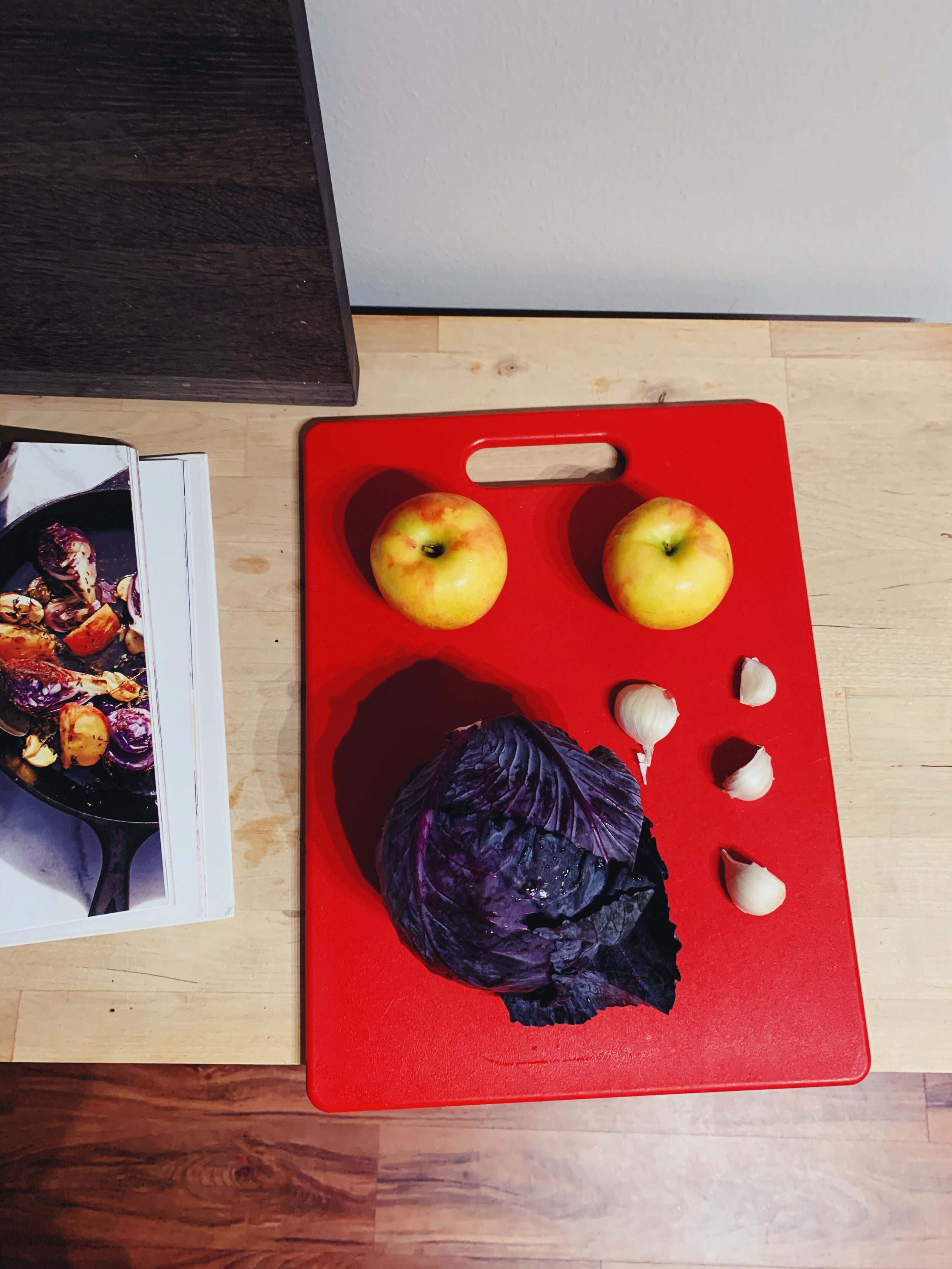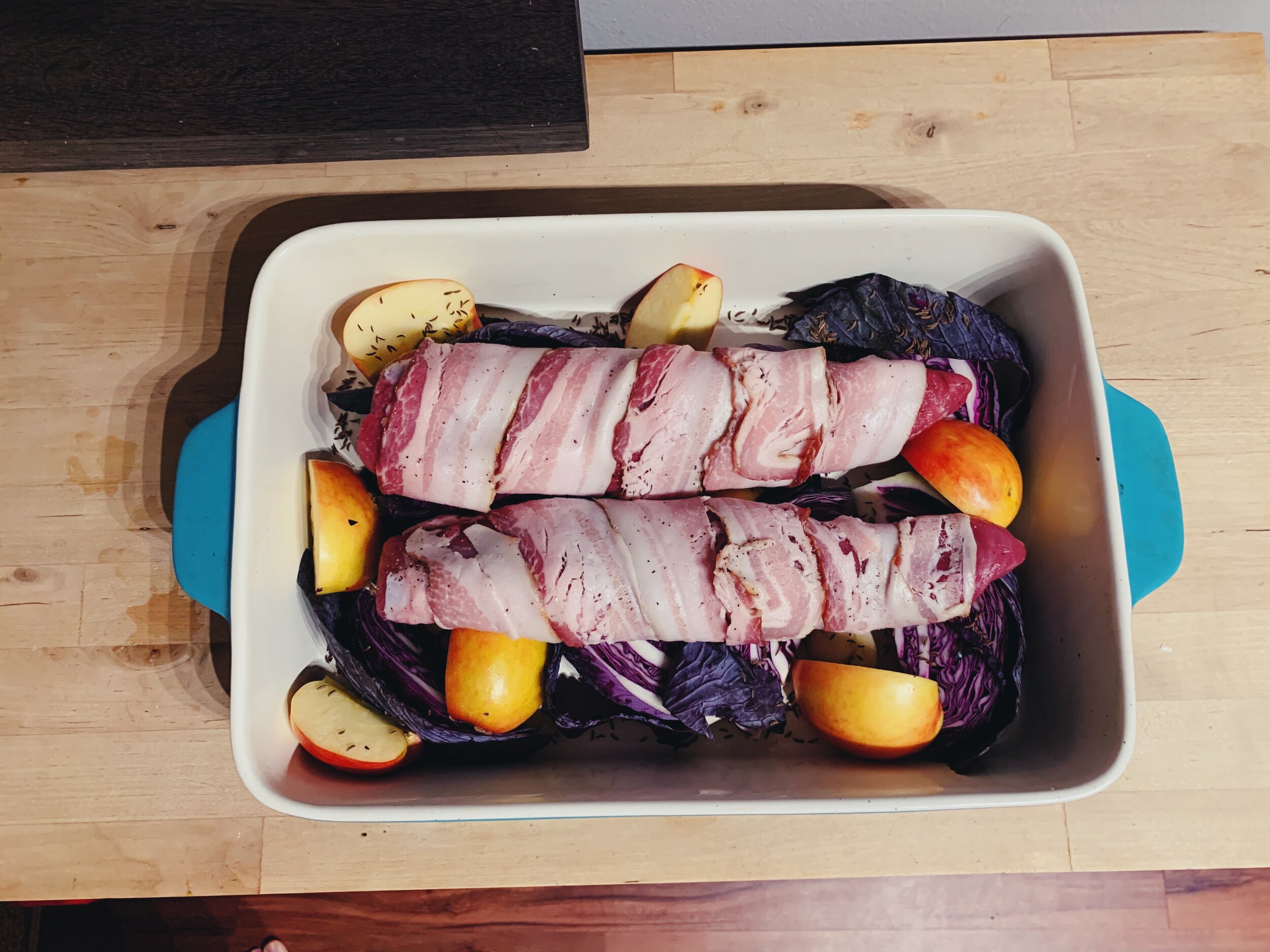Imagine you’re in a grocery store, and you’re tasked with selecting the most average, inconsequential ingredient for every type of food. I know it’s a strange hypothetical but stick with me here.
Snacks: saltines, Cheese: swiss, Cookies: Fig Newtons, Meat: ground turkey OR pork tenderloin, Veggies: definitely cabbage
Apples and bacon are excellent, but still, I was quite skeptical. Oh me of little faith. Leave it to Alison to turn dull foods like pork tenderloin and cabbage into something so fantastic. I ate seconds and thirds. I’ve never enjoyed cabbage so much. Unless finely shredded, raw cabbage doesn’t do anything for me. Sauteed cabbage is limpy and sad. But a roasted cabbage head gets tender in the middle and crispy on the outside, now that’s the kind of cabbage I’ll eat weekly! Okay, monthly. Let’s not get ahead of ourselves here.
There’s not much more to this dish outside of the ingredients in the title, except for two that really pull it all together: caraway seeds and red wine vinegar.
I must confess, I don’t remember ever cooking with caraway seeds, and I couldn’t have told you, even remotely, what they taste like. So I did a bit of a deep dive. According to Wikipedia, caraway is “also known as meridian fennel and Persian cumin” and “is similar in appearance to other members of the carrot family.” Another site says it has a bit of an anise flavor. Based on those descriptions, I was even more confused. But when I finally got ahold of the seeds, I saw that they are practically identical to fennel seeds, just a darker brown and a bit finer. And as odd as it sounded on the internet, they did add a slightly cumin-y, licorice-y, anise-y flavor that complemented the salty pork, tangy apples, and bland cabbage.
The final finish with vinegar, something Alison calls for a lot, made all of the dish’s elements feel lighter and brighter. It’s also what gave the cabbage the final flavor push it needed. (Small confession. In my old advertising job, I worked exclusively on a client that made vinegar. Their ads always talked about how vinegar could “brighten any dish,” and I thought it sounded like hokey advertising-speak, a little ridiculous. How could you actually “brighten” a dish, besides shining a flashlight on your food? But now, as I attempt to write about vinegar myself, I honestly can’t come up with a better word for how it transforms food. If salt makes flavors taste more like themselves, then vinegar brightens them. Fine, I was wrong!)
This meal was the simplest main dish to assemble so far. Which served me well, since I needed to put it together quickly and transport it to a dear friend’s apartment to roast. Kailey and I spent the evening talking about how much this meal surprised and delighted us, among other fun topics like popular 90’s Christian rock bands. Jars of Clay, anyone?
15 recipes cooked, 210 to go.
















